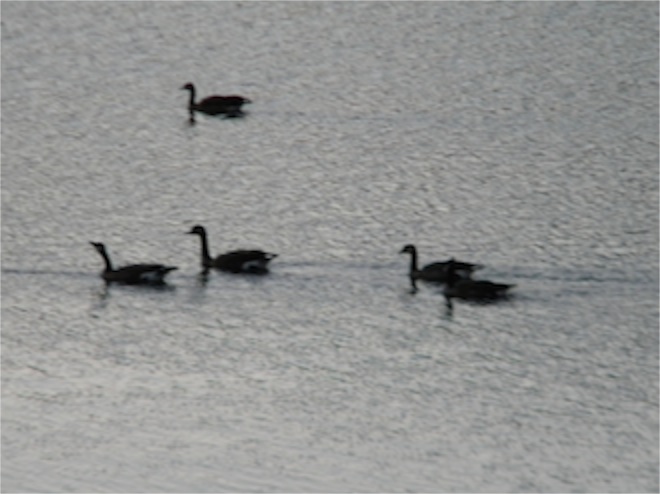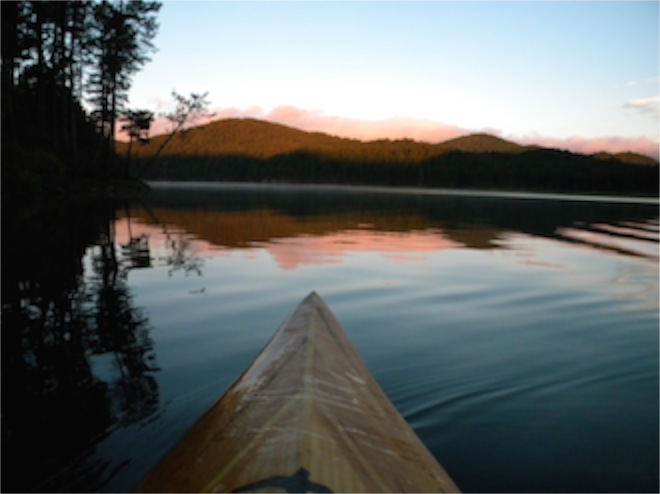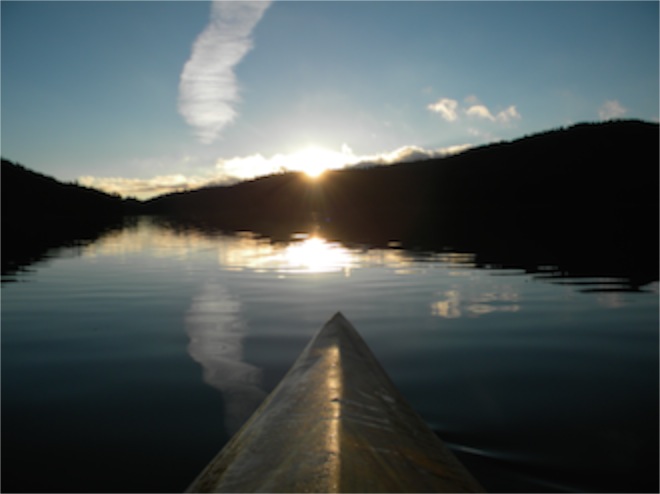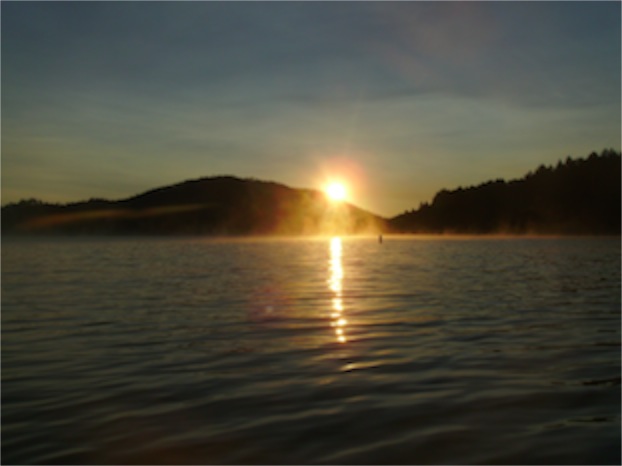More beauty than we see
17/09/13 05:15
Human vision is unique in the particular depth of field and the colors that we see. Different animals have different structures in their eyes that result in the visual experience being different for those animals. For the most part, animals have adapted to the unique circumstances of their lives. The deer in our yards, for example have eyes that have more rods and fewer cones than human eyes. Rods are sensitive to low light but don’t’ register color. While we humans have limited night vision, the deer see much better in low light situations. They do not, however, have the same ability to distinguish color as we do. I don’t think that we fully understand how deer see. There are lots of articles in hunting magazines that claim to have a deeper understanding and the companies that market high end hunting clothing claim to have come up with products that are supposed to make humans invisible to deer. Whether or not these products work is debatable.
What we do know is that the world looks different to a deer than it does to our eyes.
 The world looks different to the ducks, geese and herons on the lake as well. Birds see in color though their range of vision is probably a bit different on the spectrum than ours. Birds that are active at night, such as owls, can see more in the near ultraviolet range than humans. The water birds have a unique adaptation in their eyes that allows them to fix the horizon accurately as a reference point. Some birds also have brightly colored oil droplets in their eyes that serve as filters and allow them to see in a different way. Yellow oil droplets remove much of the blue from the sky and allow the bird to perceive more contrast between an object flying and the background of the sky. Some birds also have red droplets that remove green and allow for better vision against the background of plants and trees.
The world looks different to the ducks, geese and herons on the lake as well. Birds see in color though their range of vision is probably a bit different on the spectrum than ours. Birds that are active at night, such as owls, can see more in the near ultraviolet range than humans. The water birds have a unique adaptation in their eyes that allows them to fix the horizon accurately as a reference point. Some birds also have brightly colored oil droplets in their eyes that serve as filters and allow them to see in a different way. Yellow oil droplets remove much of the blue from the sky and allow the bird to perceive more contrast between an object flying and the background of the sky. Some birds also have red droplets that remove green and allow for better vision against the background of plants and trees.
It is believed that beavers also can see in color, though the exact range of their color vision is probably different from ours. Because beavers spend much time in muddy water, it is assumed that they can see better in low light situations and, like deer, they may have less color sensitivity than humans.
 All of this is to simply observe that the particular way a sunrise on the lake looks to human eyes is probably different than it looks to the eyes of the critters that live at the lake. Although the campgrounds still have quite a few campers and the summer cabin area has water until the end of September, there are mornings when I arrive at the lake early enough that it seems as if I am the only one who is looking at the beauty of the place. As autumn progresses and more and more boats are pulled from the lake and more and more campers head to warmer places, the feeling of having the lake to myself increases. Long before the lake freezes over, I will be able to have the lake to myself any day of the week.
All of this is to simply observe that the particular way a sunrise on the lake looks to human eyes is probably different than it looks to the eyes of the critters that live at the lake. Although the campgrounds still have quite a few campers and the summer cabin area has water until the end of September, there are mornings when I arrive at the lake early enough that it seems as if I am the only one who is looking at the beauty of the place. As autumn progresses and more and more boats are pulled from the lake and more and more campers head to warmer places, the feeling of having the lake to myself increases. Long before the lake freezes over, I will be able to have the lake to myself any day of the week.
Some of the birds will also leave for the winter, but the mammals, for the most part remain in their homes around the lake.
 When I look at a sunrise from my boat on the lake, I am struck by the uniqueness of the moment. Each sunrise is different. The particular pattern of clouds, the angle of the sun, and a thousand different factors combine to make each sunrise a unique visual experience. And since my position on the lake affects what I see, there are many times when I am the only creature that can see what I see. It is glory with a single witness.
When I look at a sunrise from my boat on the lake, I am struck by the uniqueness of the moment. Each sunrise is different. The particular pattern of clouds, the angle of the sun, and a thousand different factors combine to make each sunrise a unique visual experience. And since my position on the lake affects what I see, there are many times when I am the only creature that can see what I see. It is glory with a single witness.
And when I do not go to the lake, there is beauty that is not witnessed.
This wonderful world does not withhold beauty simply because there is no one to behold it. It is a simple concept and yet it is one that has mystified poets and philosophers from the beginning of history. And there is significant evidence that human eyes have evolved significantly over the centuries. We probably don’t see the world exactly as did the residents of ancient Greece, for example. It is likely that we have less night vision and more color sensitivity than did people who lived thousands of years ago.
 Another observation about the beauty and glory of the world is that it is not fully captured by photography. I take a camera with me when I paddle most of the time. I try and try to capture the beauty and glory that I see and am struck by the simple fact that looking at a photograph is not at all the same as experiencing the beauty. I experimented with a simple video camera this summer and had similar results. The camera captures only part of the experience. It records only some of the colors. It seems to lower the contrast between the brightness of the sunlight and the dark shadows. I’m sure that there are photographers who understand light and lenses and filters better than I who are able to capture more accurate images. But the images remain just that: images. They are not the reality.
Another observation about the beauty and glory of the world is that it is not fully captured by photography. I take a camera with me when I paddle most of the time. I try and try to capture the beauty and glory that I see and am struck by the simple fact that looking at a photograph is not at all the same as experiencing the beauty. I experimented with a simple video camera this summer and had similar results. The camera captures only part of the experience. It records only some of the colors. It seems to lower the contrast between the brightness of the sunlight and the dark shadows. I’m sure that there are photographers who understand light and lenses and filters better than I who are able to capture more accurate images. But the images remain just that: images. They are not the reality.
Of course what we see and experience is just a small fraction of the immensity of the universe. We know so little compared with the vastness of time and space. Still, it seems significant that we are able to have some consciousness of the beauty that surrounds us. We do attempt to capture a bit of it in words and pictures. Our art does reflect a bit of the glory of the natural world.
On days like today when I won’t be going to the lake, I see a bit of the beauty of the world in the places that I do go and I remember the beauty that I have seen. Even without looking at the pictures that I have taken, I can recapture part of the experience by remembering. Some of the experience remains within me.
It is clear, however, that this world has far more beauty than we are able to perceive – and more glory than we can imagine.
What we do know is that the world looks different to a deer than it does to our eyes.

It is believed that beavers also can see in color, though the exact range of their color vision is probably different from ours. Because beavers spend much time in muddy water, it is assumed that they can see better in low light situations and, like deer, they may have less color sensitivity than humans.

Some of the birds will also leave for the winter, but the mammals, for the most part remain in their homes around the lake.

And when I do not go to the lake, there is beauty that is not witnessed.
This wonderful world does not withhold beauty simply because there is no one to behold it. It is a simple concept and yet it is one that has mystified poets and philosophers from the beginning of history. And there is significant evidence that human eyes have evolved significantly over the centuries. We probably don’t see the world exactly as did the residents of ancient Greece, for example. It is likely that we have less night vision and more color sensitivity than did people who lived thousands of years ago.

Of course what we see and experience is just a small fraction of the immensity of the universe. We know so little compared with the vastness of time and space. Still, it seems significant that we are able to have some consciousness of the beauty that surrounds us. We do attempt to capture a bit of it in words and pictures. Our art does reflect a bit of the glory of the natural world.
On days like today when I won’t be going to the lake, I see a bit of the beauty of the world in the places that I do go and I remember the beauty that I have seen. Even without looking at the pictures that I have taken, I can recapture part of the experience by remembering. Some of the experience remains within me.
It is clear, however, that this world has far more beauty than we are able to perceive – and more glory than we can imagine.